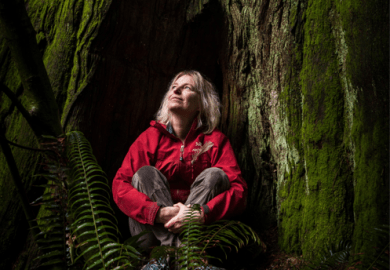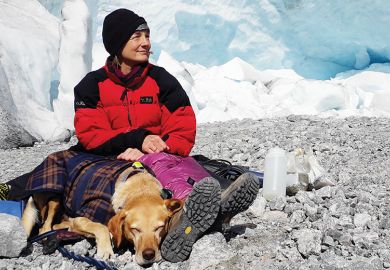Earthquake research is a young discipline. The plate tectonics framework for understanding the occurrence of earthquakes dates from the early 1960s, and serious investigation of the earthquake process began only three decades ago. It is therefore not surprising that earthquake physicists disagree over fundamental issues, such as whether or not earthquakes are inherently unpredictable.
Earthshaking Science attempts to convey "what we know (and don't know) about earthquakes" to a general audience without scientific training. Susan Hough covers the basics - plate tectonics, earthquake size and location, seismic waves and ground shaking - briefly but adequately and points readers to sources of additional information on these and more complex topics. More interestingly, throughout the book she integrates state-of-the-art research with explanations of earthquake phenomena and attempts to explain many of the current controversies.
A good example is the chapter in which she discusses what is meant by an earthquake prediction, presents arguments for and against the predictability of earthquakes, and describes two ongoing prediction experiments.
Hough presents the basics well and admits that the prediction optimism of the 1970s has been replaced by pessimism. But more interesting - at least to a practising geophysicist - are her attempts to discuss the likelihood of earthquake prediction based on alternative concepts of self-organised criticality and critical-point phenomena.
There are two diametrically opposed views of the earthquake process. The first is based on historical earthquake research, the so-called elastic rebound model formulated by H. F. Reid after the 1906 San Francisco earthquake. In this view, large earthquakes are simple consequences of stress build-up due to plate motions. As the plates move, the faults are stuck together by friction; eventually the stress on the faults overcomes the frictional resistance and a large earthquake occurs. If this build-up of stress could be monitored, prediction might be possible. Small earthquakes, in this model, are relatively inconsequential as they release very little of the stress.
In the competing self-organised critical model, small earthquakes are of fundamental importance as they set up the stress conditions that make a large event possible. In this second view, earthquakes are analogous to sand piles. Just as the addition of a single grain of sand can cause an avalanche of any size, so can the slightest increment in stress produce an earthquake of any size, depending on the conditions encountered by the growing earthquake rupture. With a self-organised critical system, prediction is impossible.
The clear distinction between these two models is somewhat muddled by a third, middle-ground theory, in which earthquakes are critical-point phenomena. Here the system evolves into and out of states in which large earthquakes are possible. For example, immediately after a large event the system is relaxed and only small events can occur, then as stress builds up, the system becomes capable of sustaining events of all sizes. Finally - at some time after the system has reached its critical point - a large earthquake occurs. In some variations of the model the critical "point" is a point in time at which the large event will occur, in others it is a window in time during which large events are probable or possible. In either case, prediction may be feasible if the critical point can be identified.
As the above illustrates, these are difficult concepts to describe succinctly for the general reader. Hough errs on the side of brevity; another page or two would have greatly improved her discussion. She also appears to confuse chaotic systems (which have a degree of short-term predictability) with self-organised critical models. This may be the result of oversimplifying difficult subjects for her intended audience of lay readers.
The chapters on ground motion (the term used for the shaking of the ground due to seismic waves) and seismic hazard estimation are very good. Ground motion depends on a number of factors, including the earthquake source, the path between the source and the site of interest, and the soil conditions at the site. This is an area in which Hough has significant expertise and it shows in her clear, well-explained text. With seismic hazard, she describes the elements required to estimate hazard in enough detail to provide a real understanding of the topic.
This is a very ambitious book, bearing in mind its expected readership and the unsettled state of the subject. Hough does a good job, and the interested non-scientific reader will come away with solid knowledge of the topic. A reader with a scientific background may, however, become frustrated by the occasional oversimplifications.
Sandy Steacy is lecturer in geophysics, University of Ulster, Coleraine.
Earthshaking Science: What We Know (and Don't Know) about Earthquakes
Author - Susan Elizabeth Hough
ISBN - 0 691 05010 4
Publisher - Princeton University Press
Price - £17.95
Pages - 2
Register to continue
Why register?
- Registration is free and only takes a moment
- Once registered, you can read 3 articles a month
- Sign up for our newsletter
Subscribe
Or subscribe for unlimited access to:
- Unlimited access to news, views, insights & reviews
- Digital editions
- Digital access to THE’s university and college rankings analysis
Already registered or a current subscriber?



